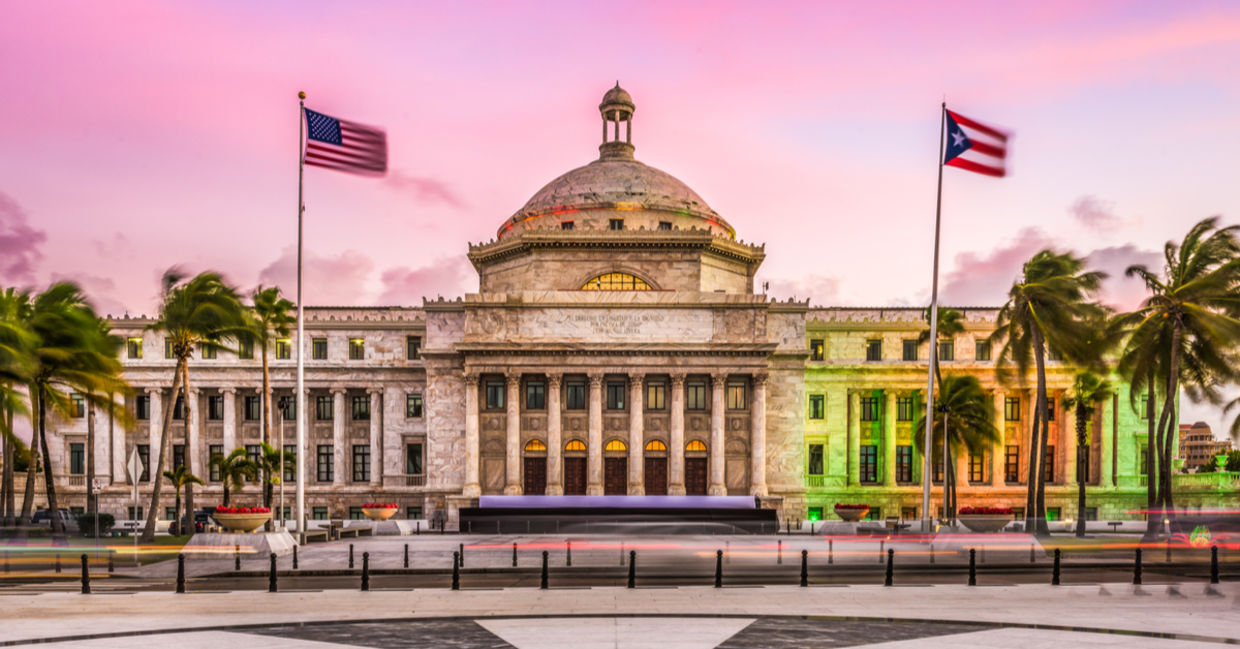
(Sean Pavone / Shutterstock.com)
Puerto Rico's legislature just passed the ambitious Puerto Rico Public Energy Policy Act that provides for 100 percent renewable energy by 2050.
The law that passed on March 25 will transform the island's ailing electrical system into a modern sustainable one after the collapse of 80 percent of the electrical grid during Hurricanes Irma and Maria in 2017.
It took 11 months to restore electricity to the island, making it the longest power failure in US history. Now there is a chance for Puerto Rico to become a leader in clean energy technology that can be built to withstand future hurricanes.
The act was passed by the Puerto Rican Senate as bill 1121 in June 2018 and calls for electricity from renewable sources to be at 40 percent and that all coal-fired electrical plants to be closed by 2028 and that all oil-fired power plants convert to dual-capacity within five years. It was just passed by the house and only needs to be signed by Governor Ricardo Rossello.
Once that last step is complete, Puerto Rico will join Hawaii and California in establishing the transition to fully renewable energy. That is a big accomplishment for the small island territory.
The energy policy act encourages the development of micro-grids across the country by ensuring that solar energy users will have access to net energy metering (NEM) within a month of the system's installations and that the existing NEM policy will not change for five years. That's five years of full compensation for consumer's solar energy.
Utility approval for all solar projects will be reduced to just 90 days, making it very easy for companies to plan and implement solar projects. New solar customers will be grandfathered from any future policy changes for the next 20 years.
After the devastating hurricanes, solar companies like SunRun, Sonnen, and Tesla installed microgrids (solar panels and batteries) at hospitals and fire stations where electrical power was essential. The systems worked, and this helped boost the support for microgrids and renewable energy on the island.
According to the Puerto Rico Electric Power Authority (PREPA) currently, 62 percent of the island's power is provided by burning coal and oil. This makes electrical energy twice as expensive as on the mainland. Only four percent is from renewables, but that will quickly change, and the cost of electricity will go down on the island.
“SB1121 establishes Puerto Rico’s Public Policy on Energy, an integral part in our grid’s transformation. This will help build a more resilient, reliable and cleaner energy grid. Puerto Rico is becoming a leader in clean energy technology that can improve quality of life for over three million Americans," Rossello tweeted in 2018.
SB1121 establishes Puerto Rico’s Public Policy on Energy, an integral part in our grid’s transformation. This will help build a more resilient, reliable and cleaner energy grid. #PR is becoming a leader in clean energy tech that can improve quality of life for over 3M Americans.
— Ricardo Rossello (@ricardorossello) March 26, 2019
“I call upon my fellow governors across the #US: #ClimateChange is the most pressing issue of our generation and the time to tackle it is now. Join #PuertoRico as we transform our energy grid into a modern, efficient and clean model for the whole of the United States,” he added.
YOU MIGHT ALSO LIKE:
Tesla Restored Power to a Puerto Rican Children's Hospital
Puerto Rico Wants to Switch to 100 Percent Renewable Energy
Renewable Energy Has Overtaken Fossil Fuels in the UK







